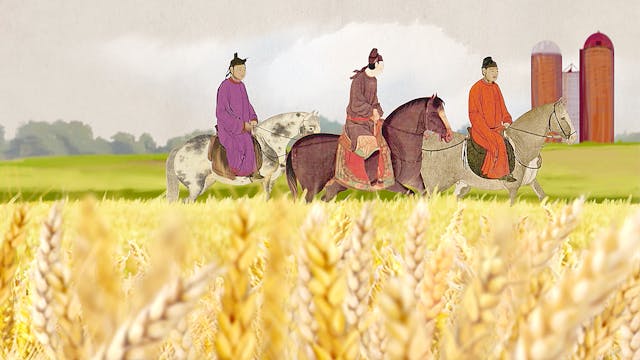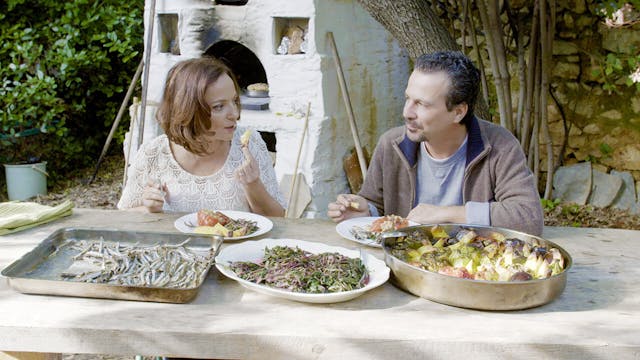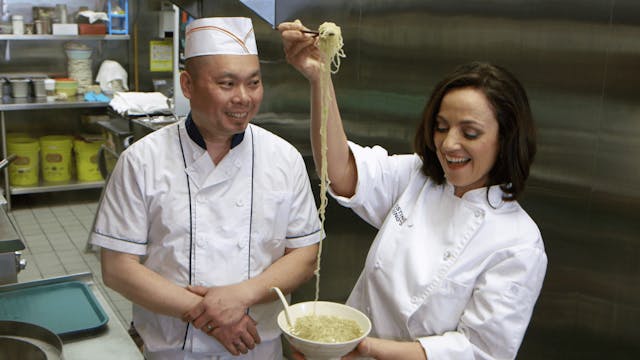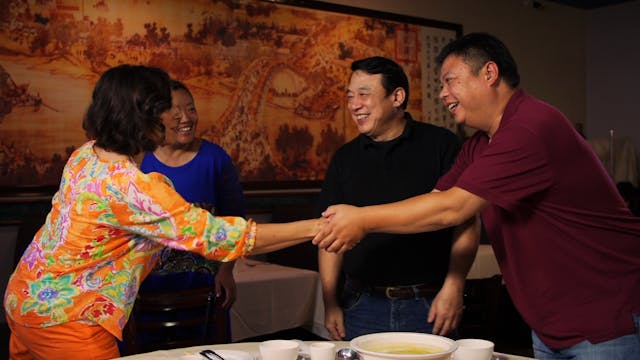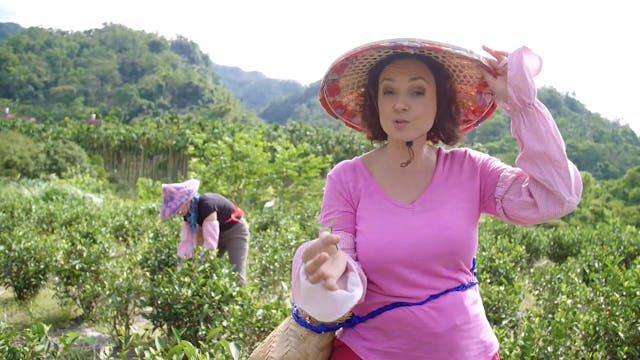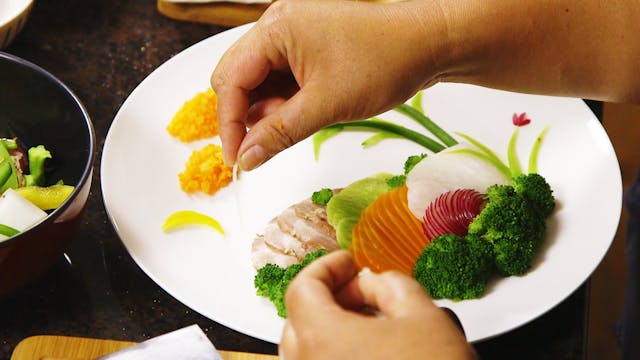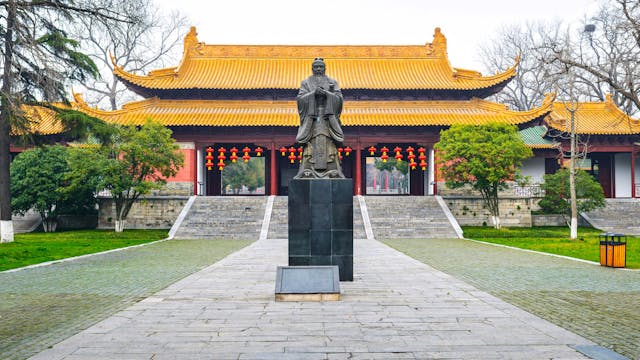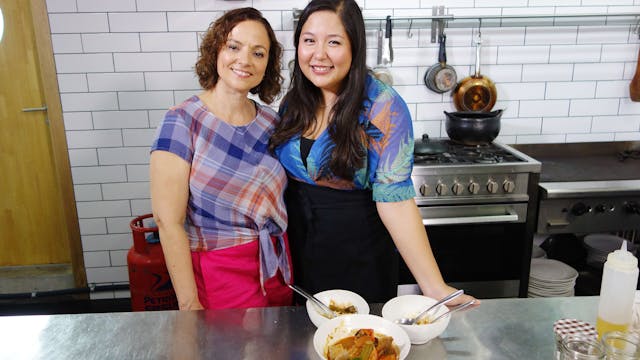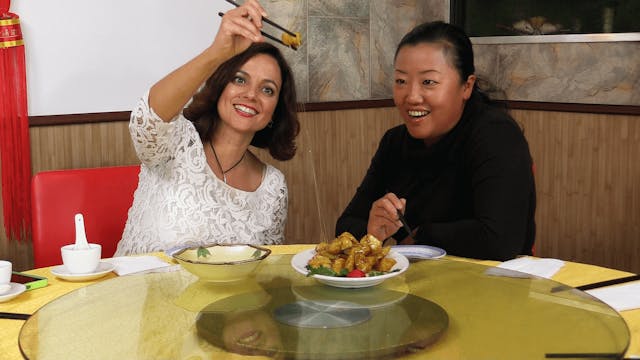Confucius Was A Foodie - All 3 seasons
Across 19 delicious episodes of 'Confucius was a Foodie', Chef Christine Cushing explores Europe, Asia, North America, and Australia finding connections between Chinese culture and cuisine, and tracing the origins of different global food and culinary traditions back to their Chinese roots.
-
S1: Ep.1—Origins of the Beginnings
Everything has its origins somewhere. When it comes to food, their roots can often be traced back to China—a culinary and cultural world going back more than 5,000 years. In this episode, Chef Christine looks for the culinary roots of foods such as ice cream, ketchup, pasta, phyllo, baklava and p...
-
S1: Ep.2—Confucius and Food Philosophy
Was it Confucius or Hippocrates who first said, “let food be your medicine and medicine be your food”? Chef Christine sets off to compare the thoughts and beliefs of foodie writers and philosophers.
-
S1: Ep.3—Celebrations, Ceremonies and the Dumpling
Christine eats her way through the Chinese Solar Lunar calendar with traditional customs, cuisine and culture. The calendar appears to have a dumpling for every occasion!
-
S1: Ep.4—Noodles: Long Life, Food of Legends
Birthday parties and baby naming ceremonies all wish for the same thing—a long life. Longevity is symbolized by the noodle in Chinese culinary culture with more kinds of noodles than one can possibly imagine!
-
S1: Ep.5—The Big Picture
Christine walks in the footsteps of some of the first Chinese immigrants in North America, revealing stories of luxurious early Cantonese restaurants and imported Chinese chefs and ingredients. From its popularity in the Jewish communities of New York in the early 1900s to its 1950s resurfacing ...
-
S1: Ep.6—Cantonese
Chef Christine Cushing tastes the worst and the best Cantonese; food that makes her question what she has previously considered ‘Cantonese’. She learns dim sum-making in New York’s oldest parlor, has a Cantonese breakfast in California’s San Gabriel Valley and discovers that real Cantonese is a ...
-
S1: Ep.7—Sichuan
It is said of Sichuan cuisine that 100 dishes will have 100 flavors, so why is it that when North Americans think Sichuan they think hot hot hot? As a unique style of food, Sichuan cuisine was already famous more than 800 years ago during the Southern Song Dynasty. Originally, the cuisine’s fla...
-
S1: Ep.8—Sweet
Chinese cuisines use sugar very differently from Western cuisines, and Christine starts her comparison in Paris and Athens where she looks at how Westerners interpret ‘sweet’. Traditionally, for the Chinese, sugar is predominantly used to achieve balance, but the liberal use of sugars in South E...
-
S2: Ep 1: The Salty Flavor
Most salt in Asia is produced through the evaporation of seawater in coastal areas. This episode sees Christine learning firsthand the very challenging ‘how to’ of harvesting sea salt in Thailand’s dramatically beautiful salt fields. Cushing visits the area’s most unusual market that is regularly...
-
S2: Ep 2: Tea Culture, Celebration & Commerce
The story of tea starts in China, where legend has it that tea was discovered through leaves accidentally falling into boiling water, and continues all the way to the traditional Chinese wedding tea ceremony and the political intrigues of the American Revolution.
Christine brings along celebri... -
S2: 3: Huaiyang - The Cuisine of Poets
Chef Cushing discovers that Huaiyang cuisine is historically connected to poets and scholars, and demands meticulous knife skills and elaborate presentations. The cuisine appears to be a personification of the teachings of Confucius. The creative presentation of skillfully combined ingredients ex...
-
S2: Episode 4: The Origin of ‘Cuisine’
Is Chinese cuisine, with its Confucian structure, really the origin of the world’s great cuisines? Find out in this episode.
-
S2: Episode 5: The Bitter Flavor
The bitter flavor is often found in Chinese cooking, but rarely used alone. It is said to clear "heat", strengthen the stomach, and promote salivation
-
S2: Episode 6: Shandong - The Cuisine of Confucius
The oldest of the Chinese cuisines and with roots in dishes served to royalty, Shandong is known as the cuisine of Confucius.
-
S3: Episode 1: Northeastern
Chef Cushing discovers that a huge part of North America has more in common with the weather and agriculture of the northeastern area of China than with Canton or Sichuan, but the cuisine is hard to find. But as Christine has learned, immigration is everything when it comes to portable
cuisines. ... -
Season 3: Episode 2: The Sour Flavor
According to science, humans are the only mammals that are attracted to sour. Chinese medicinal believes says that ‘sour’ can help digestion and whet the appetite.
In traditional Chinese cuisines it is often used for balance but in south East Asian versions of Chinese dishes it is often quite f...
-
Season 3: Episode 3: Spicy
Despite popular belief, ‘spicy’ in Chinese cuisines is not always hot! In various Chinese cuisines, spices are complex and varied. Chef Christine visits the Malaysian island of Penang, a location historically important to the story of spice trade, with TV celebrity Chef Wan for a fun and fact fil...
-
Season 3: Episode 4: Xian
This traditional Chinese flavor is much discussed and debated! It’s said that MSG was created to replicate this amazing taste, which chefs once achieved through skillful preparations. While often compared to umami, culinary experts argue that xian is completely different.
In Taiwan, Chef Christi...
-
S3: Episode 5: Politics and The Origin of off shoot Cuisines
Chef Christine Cushing explores the ramifications of the beginning of a new worldwide wave of Chinese cuisine and the launching point for the evolution into a more global interpretation of Chinese cuisines. She begins her exploration looking at the ramifications of generations of classically trai...
-
Confucius Foodie Insiders Bonus Recipes
1.15 MB

